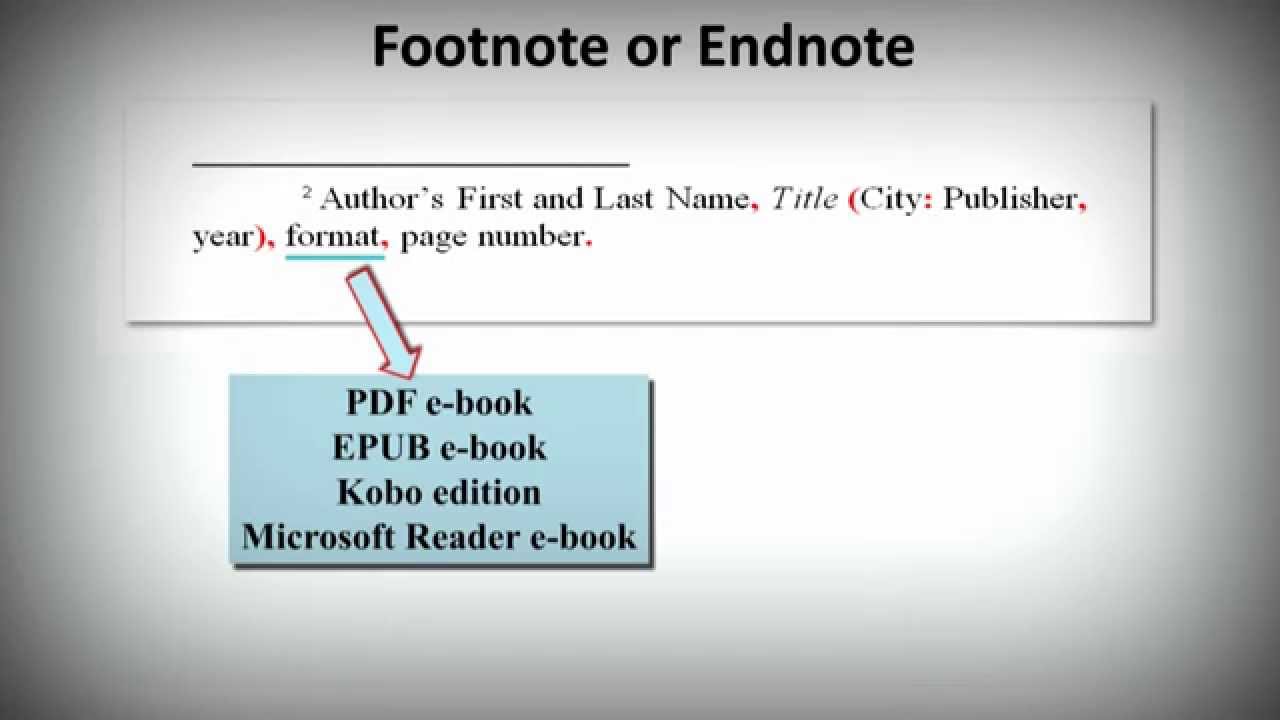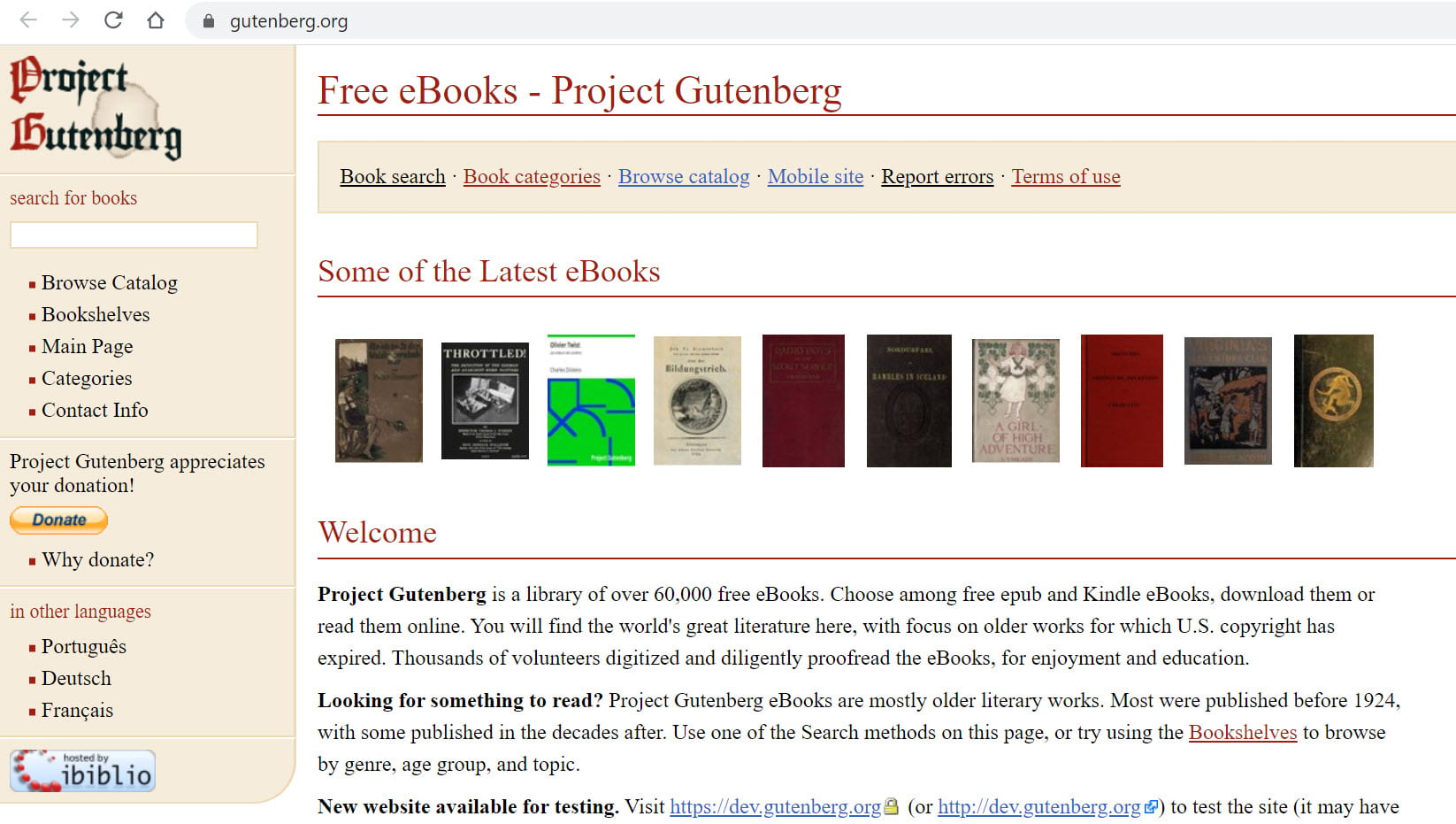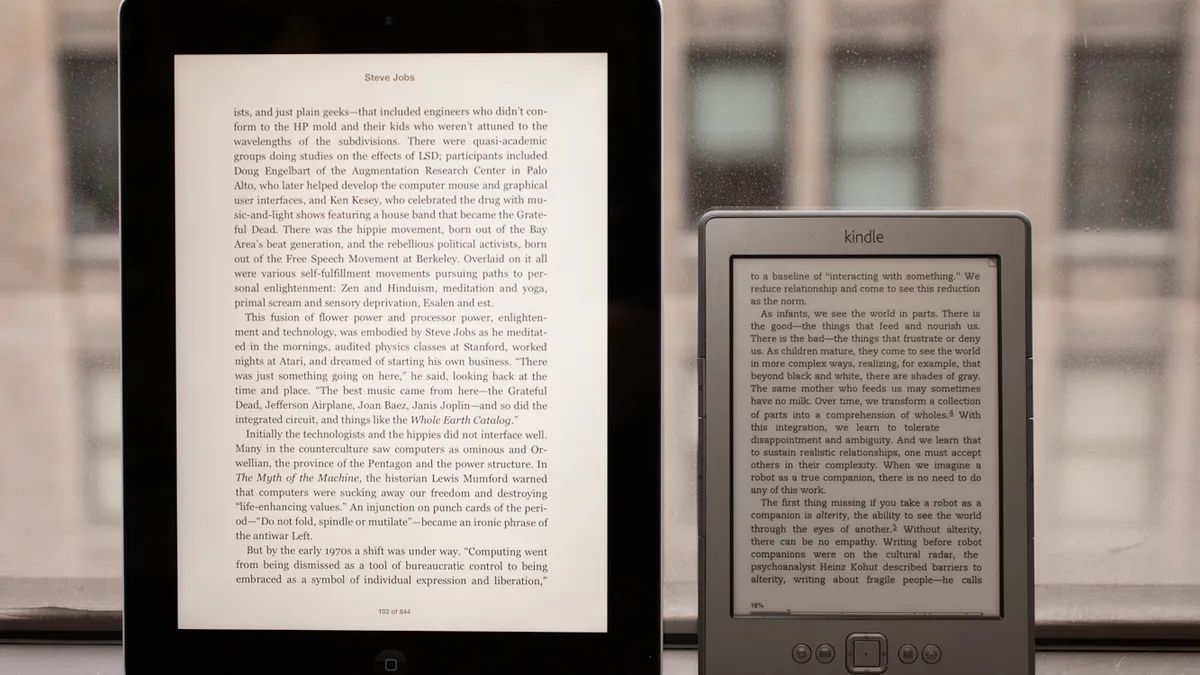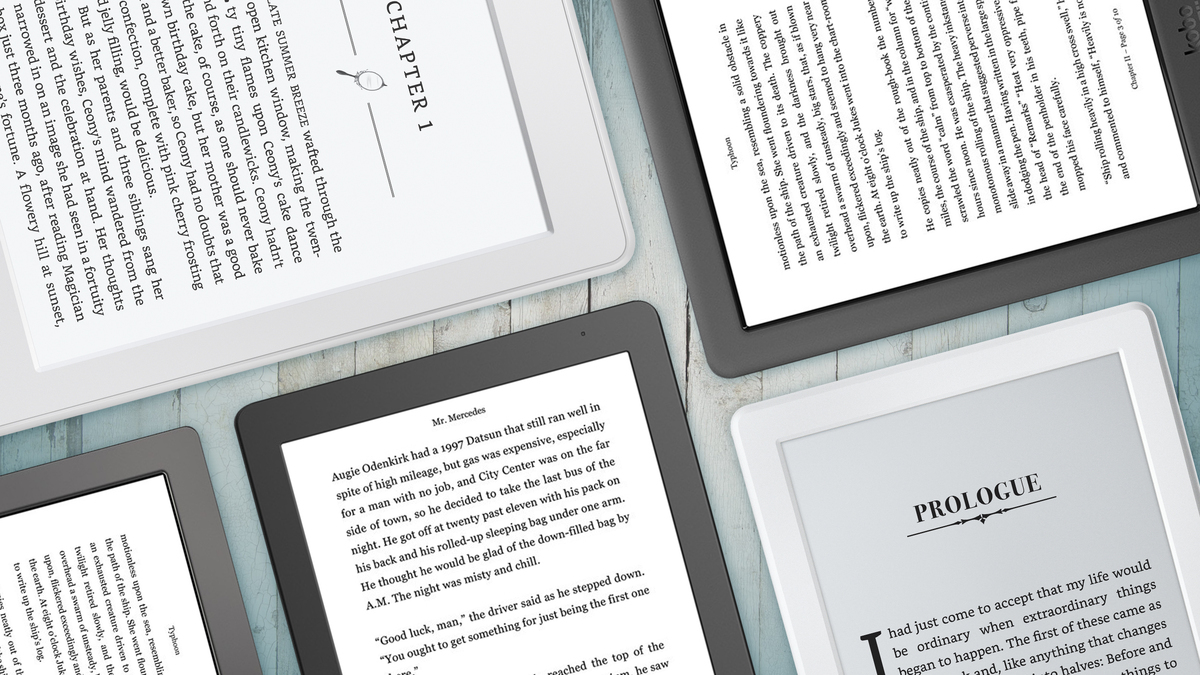Introduction
Welcome to the world of eBooks! With the technological advancements of the digital era, reading has become more accessible and convenient than ever before. Gone are the days of carrying around bulky physical books; now, you can access a vast library of knowledge with just a few taps on your device. However, as with any form of written work, it is important to properly attribute and cite the information found in eBooks. In this article, we will guide you through the process of citing an eBook and provide you with the necessary information to do so effectively in various citation styles.
Why is citing an eBook important? Well, proper citation not only gives credit to the original author for their work, but it also allows your readers to trace and verify the sources you have used. This adds credibility to your own writing, ensuring that your work is based on reliable information. Additionally, citing an eBook demonstrates academic integrity and shows respect for intellectual property rights.
Before we delve into the specifics of citation styles, it is important to have a basic understanding of what they are. A citation style is a set of guidelines and rules that dictate how you should format and present your citations within your written work. The most commonly used citation styles are APA (American Psychological Association), MLA (Modern Language Association), and Chicago. Each of these styles has its own unique requirements and conventions, so it’s important to familiarize yourself with the specific style required by your institution or publication.
In the following sections, we will explore how to cite an eBook in APA, MLA, and Chicago styles. We’ll provide you with examples and guidelines to ensure that your citations are accurate and consistent. Additionally, we will offer some general tips on citing eBooks that you can apply across different citation styles. So, let’s jump right in and discover the intricacies of properly citing an eBook!
Reasons to Cite an eBook
Citing an eBook is a crucial practice for several important reasons. Whether you are a student, researcher, or writer, recognizing the significance of proper citation will greatly enhance the quality and credibility of your work. Let’s explore some of the main reasons why citing an eBook is vital:
- Credibility: By citing an eBook, you validate the information you present in your own work, adding credibility and authority to your arguments. It demonstrates that you have done thorough research and have based your claims on reliable sources.
- Academic Integrity: Citing an eBook upholds academic integrity by acknowledging the original authors’ contributions. It shows respect for intellectual property and avoids plagiarism, which is a serious offense in the academic world.
- Verification: When you cite an eBook, you give your readers the opportunity to trace and verify the information from the original source. This promotes transparency and allows others to delve deeper into the topic if they wish.
- Breadth of Knowledge: Citing eBooks also contributes to the existing body of knowledge. By acknowledging and citing the works of others, you become a part of the scholarly conversation and contribute to the development of your field.
- Legal and Ethical Obligations: Citing an eBook is not only about intellectual honesty but also about adhering to legal and ethical obligations. Failure to properly attribute the work of others can lead to legal consequences and damage your reputation as a writer or researcher.
By recognizing these reasons to cite an eBook, you demonstrate your commitment to academic excellence, respect for intellectual property rights, and integrity in your writing. Moreover, proper citation can save you from potential accusations of plagiarism and help you establish yourself as a credible and trustworthy author.
Remember, citing an eBook is not just a formality but an essential practice that supports the integrity of academic and scholarly pursuits. In the following sections, we will discuss specific citation styles and provide examples to guide you in citing eBooks accurately and effectively.
Understanding Citation Styles
When it comes to citing an eBook, it’s important to understand the different citation styles and their specific requirements. Each citation style has its own set of rules and guidelines for formatting citations, including the order of elements, punctuation, and the inclusion of page numbers. Let’s take a closer look at the main citation styles you are likely to encounter:
- APA (American Psychological Association): APA style is widely used in the social sciences and is known for its emphasis on author-date citations. In APA style, the author’s last name and the publication year are typically included in the in-text citation, while the full reference is provided in the reference list at the end of the document.
- MLA (Modern Language Association): MLA style is commonly used in the humanities and focuses on the author-page format for in-text citations. In MLA style, the author’s last name and the page number are included in parentheses within the text, while the full reference is listed in the Works Cited page at the end of the document.
- Chicago/Turabian: Chicago style is primarily used in the fields of history, literature, and the arts. It offers two documentation systems: notes and bibliography (which uses footnotes or endnotes) and author-date (similar to APA). The choice between the two depends on the preferences of your instructor or the requirements of your particular project.
It’s important to note that these citation styles may have specific variations when it comes to citing eBooks. For example, you may need to include additional information such as the format of the eBook (e.g., PDF, EPUB) or the URL or DOI if the eBook is accessed online.
Don’t worry if this seems overwhelming at first! Many resources, such as online citation generators and style guides, are available to assist you in properly formatting your citations. These resources provide guidelines and examples for citing various types of sources, including eBooks.
Now that we have a basic understanding of citation styles, let’s dive into the specifics of citing eBooks in APA, MLA, and Chicago styles. Understanding the requirements of each style will enable you to accurately cite the eBooks you use in your research and writing.
APA Citation Style for eBooks
When citing an eBook in APA style, you need to follow a specific format to ensure accurate and consistent citations. The APA style emphasizes the author-date citation system and requires a reference list at the end of your document. Here’s how to cite an eBook in APA style:
In-text citation: In the body of your paper, include the author’s last name and the publication year in parentheses. For example: (Smith, 2022).
Reference list: At the end of your document, provide a detailed reference for the eBook. The general format for an eBook citation is:
Author’s Last Name, First Initial. (Year). Title of eBook. Retrieved from URL or DOI
If your eBook has a specific edition or volume, include that information after the title of the eBook. Here’s an example of an APA citation for an eBook:
Smith, J. (2022). The Art of Writing: A Guide for Aspiring Authors (2nd ed.). Retrieved from https://www.example.com/ebook
If the eBook does not have a specific author, use the name of the organization or group responsible for producing the eBook as the author. If there is no publication year, use “n.d.” (no date) in the in-text citation and the reference list. If the eBook is accessed from a database or website, include the URL or the DOI (Digital Object Identifier) in the reference.
Remember to double-check your citations for accuracy and completeness. Use online citation generators or consult the APA Publication Manual for further guidance on citing eBooks and other sources.
Now that you have an understanding of APA citation style for eBooks, let’s move on to MLA citation style for eBooks.
MLA Citation Style for eBooks
In MLA style, citing an eBook requires following a specific format to ensure accurate and consistent citations. The MLA style uses the author-page format for in-text citations and includes a Works Cited page at the end of your document. Here’s how to cite an eBook in MLA style:
In-text citation: In the body of your paper, include the author’s last name and the page number in parentheses after any information you have borrowed or quoted. For example: (Smith 45).
Works Cited: At the end of your document, provide a detailed citation for the eBook. The general format for an eBook citation in MLA style is:
Author’s Last Name, First Name. Title of eBook. Publisher, Year.
If your eBook has a specific edition or volume, include that information after the title of the eBook. Here’s an example of an MLA citation for an eBook:
Smith, John. The Art of Writing: A Guide for Aspiring Authors. Example Publisher, 2022.
If your eBook has a specific chapter or section, you can include that information after the title. For example: Smith, John. The Art of Writing: A Guide for Aspiring Authors. Example Publisher, 2022, chapter 3.
If the eBook does not have a specific author, use the title of the eBook in place of the author’s name. If there is no publication year, use “n.d.” (no date) in the in-text citation and exclude the year from the Works Cited entry.
If you accessed the eBook online, include the URL or permalink in the citation. However, if the eBook is from a database or a subscription service, include the name of the database or service instead of the URL. Consult the MLA Handbook or use online citation generators for further guidance on citing eBooks and other sources in MLA style.
Now that you have an understanding of MLA citation style for eBooks, let’s move on to Chicago citation style for eBooks.
Chicago Citation Style for eBooks
Chicago style offers two main documentation systems: notes and bibliography, and author-date. For citing eBooks, the notes and bibliography system is commonly used. Here’s how to cite an eBook in Chicago style:
Footnote/Endnote citation: In the body of your paper, use superscript numbers to indicate citations. At the bottom of the page (footnotes) or at the end of the document (endnotes), provide a detailed citation. The general format for an eBook citation in Chicago style is:
Author’s First Name Last Name, Title of eBook (Place of Publication: Publisher, Year), page number (or chapter/section number if applicable).
For example:
John Smith, The Art of Writing: A Guide for Aspiring Authors (New York: Example Publisher, 2022), 45.
If the eBook does not have a specific author, use the title of the eBook in place of the author’s name. If there is no publication year, use “n.d.” (no date) in the in-text citation and exclude the year from the citation.
Bibliography entry: At the end of your document, provide a more detailed citation in the bibliography section. The format is similar to the footnote/endnote citation:
Last Name, First Name. Title of eBook. Place of Publication: Publisher, Year.
For example:
Smith, John. The Art of Writing: A Guide for Aspiring Authors. New York: Example Publisher, 2022.
If the eBook is accessed online, include the URL or DOI (Digital Object Identifier) at the end of the citation. Ensure that the URL is a permalink or a stable link for longevity. If accessed through a database, include the name of the database instead of the URL.
Remember to consult the Chicago Manual of Style for specific variations and additional guidance for citing eBooks in Chicago style. Online citation generators can also be helpful tools for generating accurate Chicago style citations.
Now that you have an understanding of Chicago citation style for eBooks, let’s move on to the next section for specific examples on how to cite eBooks in each style.
How to Cite an eBook in APA Style
Citing an eBook in APA style follows a specific format to ensure accurate and consistent citations. Here’s a step-by-step guide on how to cite an eBook in APA style:
In-text citation: In the body of your paper, include the author’s last name and the publication year in parentheses. For example: (Smith, 2022).
Reference list: At the end of your document, provide a detailed reference for the eBook. The general format for an eBook citation is:
Author’s Last Name, First Initial. (Year). Title of eBook. Retrieved from URL or DOI
If your eBook has a specific edition or volume, include that information after the title of the eBook. Here’s an example of an APA citation for an eBook:
Smith, J. (2022). The Art of Writing: A Guide for Aspiring Authors (2nd ed.). Retrieved from https://www.example.com/ebook
If the eBook does not have a specific author, use the name of the organization or group responsible for producing the eBook as the author. If there is no publication year, use “n.d.” (no date) in the in-text citation and the reference list. If the eBook is accessed from a database or website, include the URL or the DOI (Digital Object Identifier) in the reference.
When citing an eBook chapter or section, include the chapter title in quotation marks after the eBook title, followed by the word “In” and the name(s) of the editors or authors of the eBook. Afterward, provide the page range of the chapter or section. Here’s an example:
Smith, J. (2022). “Chapter Title.” In A. Johnson (Ed.), The Art of Writing: A Guide for Aspiring Authors (2nd ed., pp. 45-68). Retrieved from https://www.example.com/ebook
Remember to double-check your citations for accuracy and completeness. Use online citation generators or consult the APA Publication Manual for further guidance on citing eBooks and other sources.
Now that you know how to cite an eBook in APA style, let’s explore the MLA citation style for eBooks.
How to Cite an eBook in MLA Style
Citing an eBook in MLA style requires following a specific format to ensure accurate and consistent citations. Here’s a step-by-step guide on how to cite an eBook in MLA style:
In-text citation: In the body of your paper, include the author’s last name and the page number in parentheses after any information you have borrowed or quoted. For example: (Smith 45).
Works Cited: At the end of your document, provide a detailed citation for the eBook. The general format for an eBook citation in MLA style is:
Author’s Last Name, First Name. Title of eBook. Publisher, Year.
If your eBook has a specific edition or volume, include that information after the title of the eBook. Here’s an example of an MLA citation for an eBook:
Smith, John. The Art of Writing: A Guide for Aspiring Authors. Example Publisher, 2022.
If your eBook has a specific chapter or section, you can include that information after the title. For example: Smith, John. The Art of Writing: A Guide for Aspiring Authors. Example Publisher, 2022, chapter 3.
If the eBook does not have a specific author, use the title of the eBook in place of the author’s name. If there is no publication year, use “n.d.” (no date) in the in-text citation and exclude the year from the Works Cited entry.
If you accessed the eBook online, include the URL or permalink in the citation. However, if the eBook is from a database or a subscription service, include the name of the database or service instead of the URL. If the eBook is accessed through a website, use the URL or DOI (Digital Object Identifier) after the publisher’s information. Remember to use a stable URL or permalink for longevity.
Consult the MLA Handbook or use online citation generators for further guidance on citing eBooks and other sources in MLA style. It’s essential to double-check your citations for accuracy and completeness to ensure proper attribution of the eBook you are referencing.
Now that you know how to cite an eBook in MLA style, let’s move on to the next section to explore the Chicago citation style for eBooks.
How to Cite an eBook in Chicago Style
Citing an eBook in Chicago style involves following a specific format to create accurate and consistent citations. Here’s a step-by-step guide on how to cite an eBook in Chicago style:
Footnote/Endnote citation: In the body of your paper, use superscript numbers to indicate citations. Provide a detailed citation at the bottom of the page (footnotes) or at the end of the document (endnotes). The general format for an eBook citation in Chicago style is:
Author’s First Name Last Name, Title of eBook (Place of Publication: Publisher, Year), page number (or chapter/section number if applicable).
For example:
John Smith, The Art of Writing: A Guide for Aspiring Authors (New York: Example Publisher, 2022), 45.
Bibliography entry: At the end of your document, provide a more detailed citation in the bibliography section. The format is similar to the footnote/endnote citation:
Last Name, First Name. Title of eBook. Place of Publication: Publisher, Year.
For example:
Smith, John. The Art of Writing: A Guide for Aspiring Authors. New York: Example Publisher, 2022.
If the eBook is accessed online, include the URL or DOI (Digital Object Identifier) at the end of the citation. Ensure that the URL is a permalink or a stable link for longevity. If accessed through a database, include the name of the database instead of the URL.
If your eBook is part of a larger work or collection, indicate this in the citation by including the title of the larger work or collection in italics before the eBook title. For example: Smith, John. “Chapter Title.” In The Art of Writing: A Guide for Aspiring Authors. New York: Example Publisher, 2022, page range.
Remember to consult the Chicago Manual of Style for specific variations and additional guidance for citing eBooks in Chicago style. Online citation generators can also be helpful tools for generating accurate Chicago style citations.
Now that you know how to cite an eBook in Chicago style, you are well-equipped to properly attribute and reference eBooks in your academic or scholarly writing.
General Tips for Citing eBooks
Citing eBooks requires attention to detail and adherence to specific citation styles. Here are some general tips to consider when citing eBooks:
- Follow the appropriate citation style: Use the citation style specified by your institution or publication. Whether it’s APA, MLA, Chicago, or another style, familiarize yourself with the rules and guidelines for citing eBooks in that specific style.
- Include essential information: When citing an eBook, provide the necessary information such as the author’s name, eBook title, publication year, place of publication, edition, and relevant page numbers or section/chapter numbers.
- Be consistent: Maintain consistency in formatting and punctuation throughout your citations. Ensure that all elements of the citation align with the designated style’s requirements.
- Pay attention to edition and volume: If your eBook has a specific edition or volume number, include it in your citation to provide accurate information to your readers.
- Include URLs or DOIs: If you accessed the eBook online, include the URL or DOI (Digital Object Identifier) at the end of the citation. Use a stable URL or permalink for longevity.
- Provide in-text citations: In your paper, include in-text citations to acknowledge when you have borrowed ideas or quoted from the eBook. Follow the style guidelines for in-text citations, including the author’s last name and relevant page numbers.
- Consult style guides and resources: Refer to official style guides, such as the APA Publication Manual, the MLA Handbook, or the Chicago Manual of Style, for detailed guidance on citing eBooks. Additionally, online citation generators can be valuable tools for generating accurate citations.
- Proofread your citations: Double-check your citations for accuracy, completeness, and proper formatting. Ensure that all elements are correctly spelled and punctuated.
- Keep track of sources: Maintain a record of the eBooks you reference, including the necessary citation information. This will make it easier to compile your bibliography or reference list at the end of your document.
By following these general tips, you can ensure that your citations for eBooks are accurate, consistent, and conform to the guidelines of the chosen citation style.
Now that you are familiar with these helpful tips, you have the tools to confidently cite eBooks in your academic or scholarly writing.
Conclusion
Citing eBooks is a crucial aspect of academic and scholarly writing. It not only gives credit to the original authors, but it also adds credibility, integrity, and transparency to your work. By properly attributing the information you use from eBooks, you demonstrate respect for intellectual property rights and contribute to the scholarly conversation.
In this article, we explored the reasons why citing an eBook is important, discussed the main citation styles (APA, MLA, and Chicago) for eBooks, and provided step-by-step guidelines for citing eBooks in each style. We also offered general tips to help you effectively and accurately cite eBooks in your writing.
Remember to consult the specific style guides, such as the APA Publication Manual, the MLA Handbook, or the Chicago Manual of Style, for detailed instructions on citing eBooks. Additionally, online citation generators can be valuable tools when formatting your citations.
By following the proper citation practices, you uphold academic integrity, give credit to the authors who have contributed to the body of knowledge, and provide your readers with the means to verify and explore the sources you used. Accurate and consistent citations contribute to the overall quality and credibility of your work.
Whether you are a student, researcher, or writer, mastering the art of citing eBooks will enhance your writing and ensure that your work meets the highest standards of academic and scholarly excellence.

























